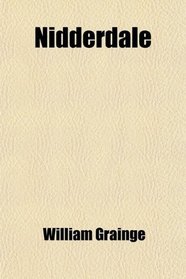Search -
Nidderdale
Nidderdale
Author:
Purchase of this book includes free trial access to www.million-books.com where you can read more than a million books for free. This is an OCR edition with typos. Excerpt from book: landed proprietors in the valley—viz: The Rev. H. J. Ingilby, John Greenwood, Esq., M.P., John Yorke, Esq., G. Metcalfe, Esq., Hanley Hutchinson, Esq., T. F. A. ... more »
Author:
Purchase of this book includes free trial access to www.million-books.com where you can read more than a million books for free. This is an OCR edition with typos. Excerpt from book: landed proprietors in the valley—viz: The Rev. H. J. Ingilby, John Greenwood, Esq., M.P., John Yorke, Esq., G. Metcalfe, Esq., Hanley Hutchinson, Esq., T. F. A. ... more »
ISBN-13: 9780217242547
ISBN-10: 0217242545
Publication Date: 8/10/2009
Pages: 176
Rating: ?
ISBN-10: 0217242545
Publication Date: 8/10/2009
Pages: 176
Rating: ?
0 stars, based on 0 rating




